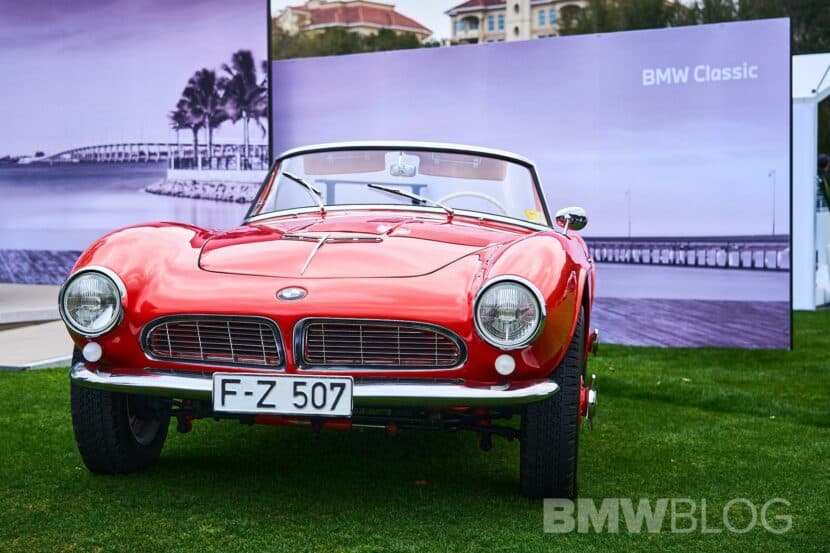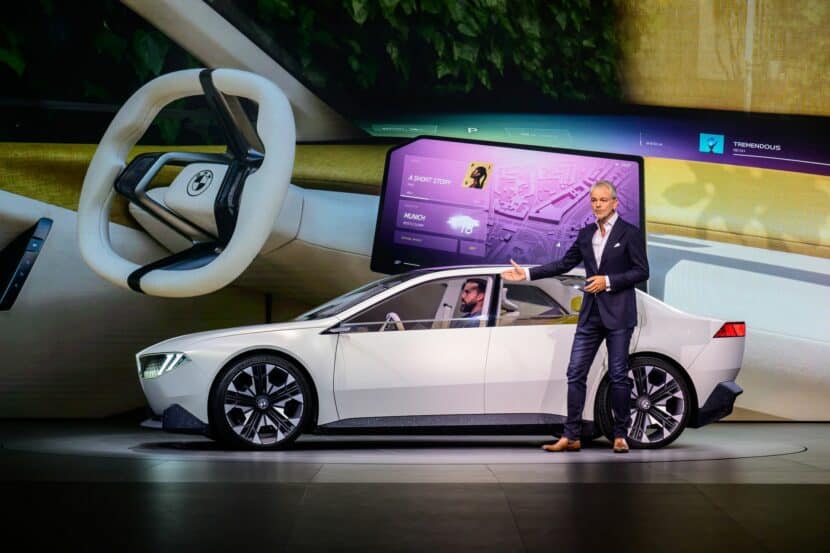Concorso d’Eleganza Villa d’Este is a regular stage for exciting and thought-provoking BMW Concept cars, and this year is no different. For 2024, we get an exciting roadster concept: the BMW Concept Skytop. Though unrelated, it’s an interesting follow-up to last year’s Z4 Concept Touring Coupe – which came close to making it into production. We were fortunate enough to talk a bit to the man behind the Skytop’s inspiring design. Who else but Adrian van Hooydonk? We gleaned insight into potential pricing for the Skytop, the differences between Concept and Vision cars, and so much more.
Concept Cars Making It To Production
“Most of the time, there’s no production intent,” Adrian says. The concept cars designed for Villa d’Este are strictly that: concepts, with little or no chance of seeing production. The 3.0 CSL was a marked exception. “Somehow the stars aligned; BMW M turned fifty, I managed to sweet talk a few people, and then all of a sudden it was everybody’s idea to do this car,” Adrian says.
The short 50-unit production taught BMW important lessons. Regarding Skytop, “we’re not sure whether we’re going to make it. But we could, because this time we put all the learnings into the design phase.” He points out, specifically, that the design includes road-legal headlights and taillights.
So, the Skytop is more ready for production than most other Concept cars. But there are still hurdles. Adrian talks about a certain Zagato-aligned coupe that was anticipated for production. After looking at costs to tool up production lines and figuring out how many units BMW needed to sell – several thousand, as it turns out – it simply didn’t happen. “It became sort of a little bit of a tense discussion, and we didn’t want it to be like that. So we decided not to go that way. And that’s how normal car projects go,” he says. Hypothetically, pricing would be around half a million, and delivery could occur – get this – within a year.
Hard Sell
So, is the Skytop destined for production? Tough to tell. Adrian found some customers that “definitely want one,” but “we’ll have to see if it all adds up.” He points out that “from a technical point of view, yes, it’s very very feasible.” A brief walk around Villa d’Este, and you’ll find some of history’s most timeless, exclusive, and sought-after vehicles. But Adrian has valuable insight: “You will rarely find something here that sold in large numbers and made that company a lot of money.” He draws parallels to the Z8 – a similarly special vehicle featuring an M drivetrain and ‘elegant body’ (as he puts it).
While the Z8 – today – is nearly considered an appreciating asset, the last few years of its production run weren’t easy. Cars sat in showrooms for months. Apparently, the M1 was similarly tough to sell – commanding huge premiums early on but difficult to move as it aged. This is true with all sports cars, more or less. That’s part of why the 3.0 CSL was strictly limited in volume. “I think in the end we could have sold more but you never want to end up in this situation,” Adrian says. Should the Skytop see the light of day, expect a production cycle closer to the CSL’s than the Z8. In fact, Adrian’s quite clear on the fact: “No, I would say we should do fifty.”
Why Concept Cars Matter
“I believe that for our customers, you always need to have things that they can dream of. And of course, you need to also sometimes fulfill those dreams,” Adrian says. There’s also value in the design phase, which allows designers to really stretch and come up with stuff they might otherwise not be able to see fully fleshed out. It’s a win-win.
When asked why BMW chooses to focus more on an exclusive design than logic-defying performance (i.e., a hypercar or supercar), Adrian is blunt. “We can’t do it,” he says before backpedaling. “It’s not that we couldn’t tackle that topic. But that seems to be a space that everybody sort of now and then goes in and tries to outdo each other and so on.” With the rise of electrification and competition from cars like the Rimac Nevera, Adrian says it’s unclear which powertrain is the best choice for something of that caliber.
Concept or Vision?
“We make a differentiation between Concept cars and Vision cars,” Adrian starts when asked about how relatively production-ready the Skytop looks. With Vision cars, “We want to outline a topic, let’s say. And there, we take a lot of liberties with technology and we don’t deal with crash. We don’t deal with aerodynamics,” he says. Concept cars, on the other hand, take those factors into account and, most of the time, actually run and/or drive. The i8 Concept, for example, even went through the wind tunnel.
The Design Process
Don’t forget – at the end of the day, Adrian van Hooydonk is a designer. “Design is shape that we haven’t seen before…you want to give the design team complete freedom, ideally, to think outside the box.” Adrian acknowledges that certain points – usually for aero and crash safety – are immovable. But it’s important to be able to work around them. “I tend to set them free with a fairly broad brief, then I see what they come up with after a number of weeks. I don’t want them to read my mind or to second guess what I’m thinking. I think that would be wrong for the company also because I have a team of 700 people worldwide, and I want to access their creativity. That’s really powerful.”
Good design isn’t easy. “My job is more or less of an art director,” Adrian says. “The more experience you have, the more you know about the limitations.” For this reason, he says many designers tend to move into design management. But having and knowing the limitations means it’s even more important to keep an open mind in the early stages of design. “I don’t want people to start telling me about limitations…luckily, most designers… don’t like to accept them.”
Big Grilles Matter – It’s Tradition, Apparently
(Un?)Surprisingly, even years after the grille redesign, Adrian still defends the decision to move away from “traditional” grilles. “The minute we show something new people are going to debate, ‘okay, is it better than what I have?’ or, ‘how does this all fit together?'” He says that if you look back, “BMW has always been this brave, not just now. The fact is, change is constant. It lead to cars like the 507 that somehow didn’t fir with the rest of the program back then.”
Adrian continues to staunchly defend the Neue Klasse design, too. “Overall, we’re looking at a cleaner form language. Fewer lines, crisp lines. And you see that on Neue Klasse and on this concept that we showed last night.” Our quote of the day? “In the 90s or so, or early 2000s, all car manufacturers were doing lots of lines.” Not those lines, silly. “Lots of dynamic lines, angry faces and all that. Now it’s getting a little bit calmer, clean.”
[Top Image: BMW AG, For press and Social Media, Gudrun Muschalla]














































































